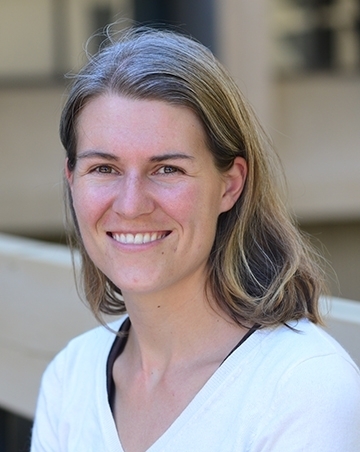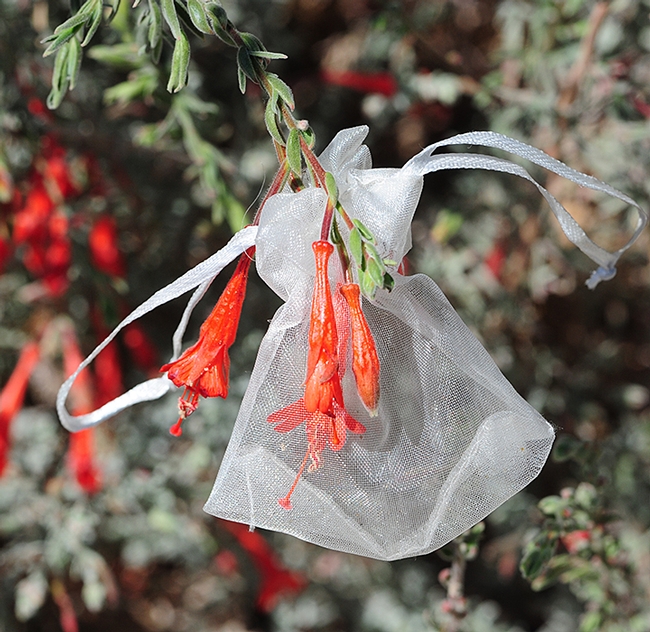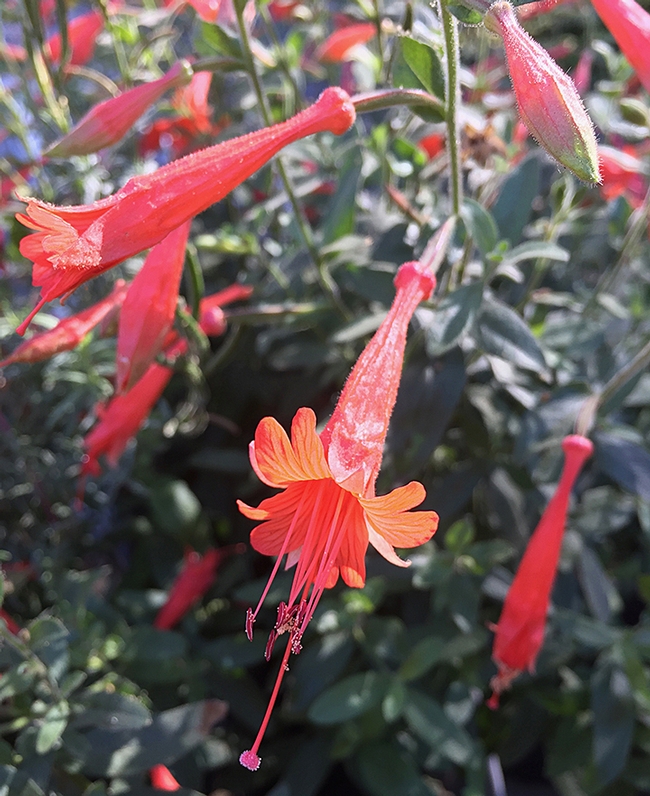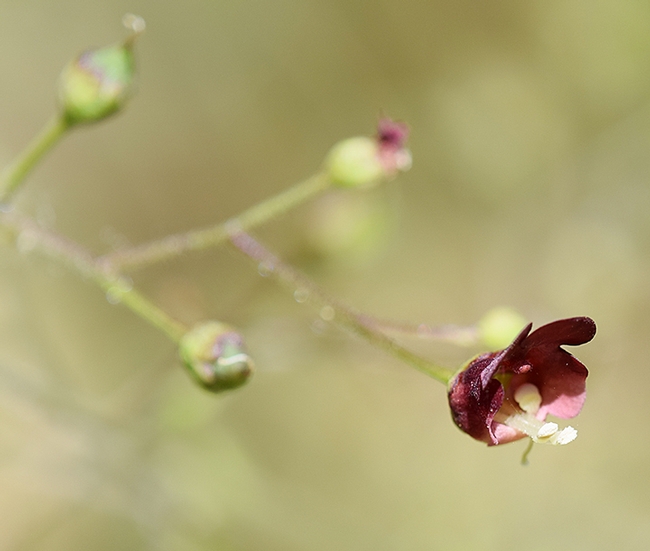- Author: Kathy Keatley Garvey

Vannette isolated one new species on California fuchsia, Epilobium canum, located in the 100-acre UC Davis Arboretum and Public Garden, and another new species on California figwort or California bee plant, Scrophularia californica, in the 258-acre UC Davis Stebbens Cold Canyon Reserve, located near Winters and encompassing parts of Solano and Napa counties. Both plants are natives and perennials.
The new species are named Acinetobacter pollinis (from Stebbins) and Acinetobacter rathckeae (from the Arboretum). Acinetobacter pollinis was named for its affinity for pollen, "as it does not grow well in the absence of pollen," Vannette said. Acinetobacter rathckeae memorializes University of Michigan emerita and lauded female pollination biologist Beverly Rathcke (1945-2011).
“There's more to come on these bacteria and what they do in flowers but from what we know now they seem to germinate and 'eat' pollen,” Vannette said. “In any case, we love and appreciate our reserves and natural areas on campus: they are an awesome source of unexplored biodiversity and really interesting biology.”
The third species the scientists described is Acinetobacter baretiae, named for female botanist Jeanne Baret (1740-1807). "So two of the three newly described species are named for noted female botanists, one a great pollination biologist and ecologist--Beverly Rathcke--and the other, historical botanist Jeanne Baret."
Rathcke, who received her doctorate from the University of Illinois Urbana-Champaign in 1973, served on the faculty of the University of Michigan's Department of Ecology and Evolutionary Biology from 1978 to 2010. She focused her research on community ecology, specifically, plant–animal interactions such as herbivory, competition, and pollination ecology. "She published some of the first papers using null models in community ecology," according to an obituary published by the Ecological Society of America. "She researched how environmental changes, such as introduced species, habitat fragmentation, and hurricane disturbances, affect species' reproductive success."
Baret, the first woman to circumnavigate the globe, disguised herself as man and as an aide to botanist Philibert Commerson, to board the French ship, Etoile, on a 1766-69 expedition. "Baret captured the attention of Commerson because she possessed botanic knowledge that lay well beyond the competence of his professors and mentors," according to Glynis Ridley, author of The Discovery of Jeanne Baret: A Story of Science, the High Seas, and the First Woman to Circumnavigate the Globe. "She was an herb woman: one schooled in the largely oral tradition of the curative properties of plants."
Microbiology Society Journal
The newly published research paper on the news species of Acinetobacter appears in the Microbiology Society's journal, International Journal of Systematic and Evolutionary Microbiology. See https://doi.org/10.1099/ijsem.0.004783.
Other co-authors are Tory Hendry, Lydia Baker, and Vivianna Sanchez of Cornell University; Sergio Alvarez-Perez, affiliated with KU Leuven University, Belgium and Complutense University, Spain; Megan Morris of Lawrence Livermore National Laboratory, Livermore; Kaoru Tsui of Kyoto University, Japan; Bart Lievens of KU Leuven and Tadashi Fukami of Stanford University.
The abstract: “A detailed evaluation of eight bacterial isolates from floral nectar and animal visitors to flowers shows evidence that they represent three novel species in the genus Acinetobacter . Phylogenomic analysis shows the closest relatives of these new isolates are Acinetobacter apis , Acinetobacter boissieri and Acinetobacter nectaris, previously described species associated with floral nectar and bees, but high genome-wide sequence divergence defines these isolates as novel species. Pairwise comparisons of the average nucleotide identity of the new isolates compared to known species is extremely low (Acinetobacter species, for which the names Acinetobacter pollinis sp. nov., Acinetobacter baretiae sp. nov. and Acinetobacter rathckeae sp. nov. are proposed. The respective type strains are SCC477T (=TSD-214T=LMG 31655T), B10AT (=TSD-213T=LMG 31702T) and EC24T (=TSD-215T=LMG 31703T=DSM 111781T).”
Rachel Vannette Lab
The Vannette lab is a team of entomologists, microbiologists, chemical ecologists, and community ecologists trying to understand how microbial communities affect plants and insects.
All plants are colonized by microorganisms that influence plant traits and interactions with other species, including insects that consume or pollinate plants, Vannette explains. She and her lab investigate the basic and applied aspects of microbial contributions to the interaction between plants and insects.
“Much of the work in my lab focuses on how microorganisms affect plant defense against herbivores and plant attraction to pollinators,” Vannette related. “For example, we are interested in understanding the microbial drivers of soil health, which can influence plant attractiveness to herbivores and the plant's ability to tolerate or defend against damage by herbivores. In addition, we are working to examine how microorganisms modify flower attractiveness to pollinators. This may have relevance in agricultural systems to improve plant and pollinator health.”
Vannette, who holds a doctorate in ecology and evolutionary biology (2011) from the University of Michigan, was selected a UC Davis Hellman Fellow in 2018.
Her recent research grants include two from the National Science Federation (NSF). One is a five-year Faculty Early Career Development (CAREER) Program award, titled “Nectar Chemistry and Ecological and Evolutionary Tradeoffs in Plant Adaptation to Microbes and Pollinators.” The other is a three-year collaborative grant, “The Brood Cell Microbiome of Solitary Bees: Origin, Diversity, Function, and Vulnerability.”





